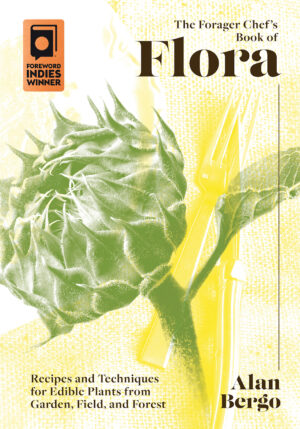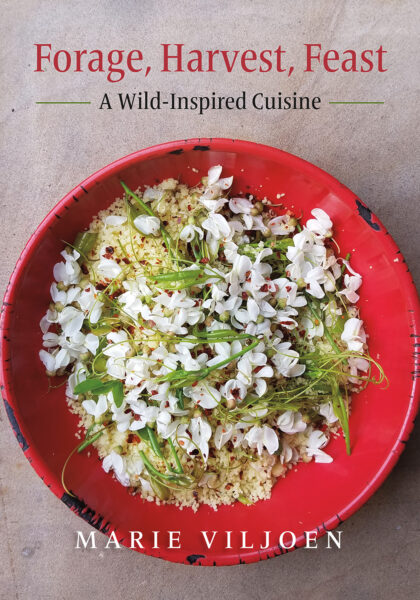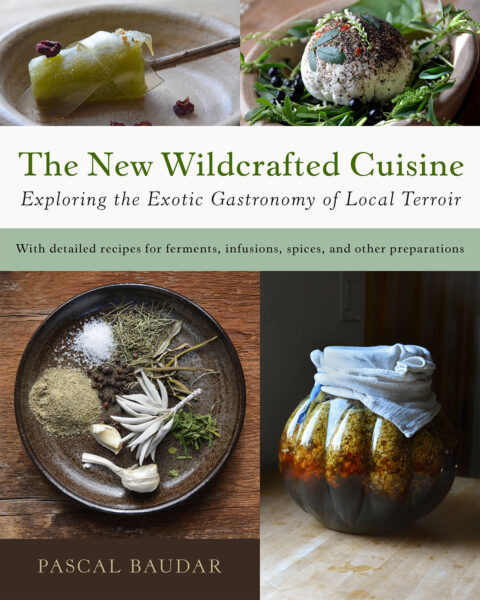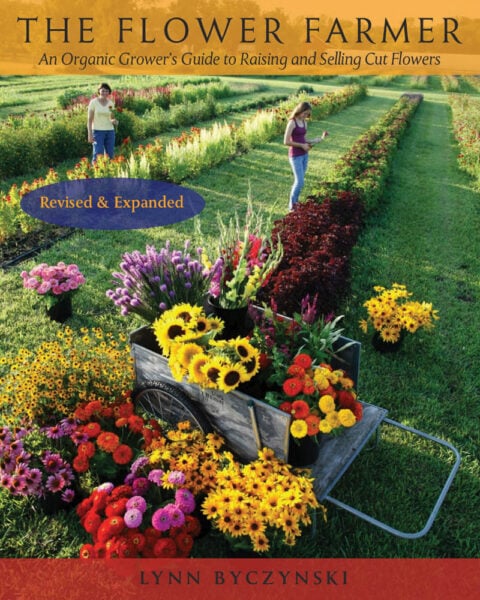The Whole Sunflower: Delicious Down to the Stem
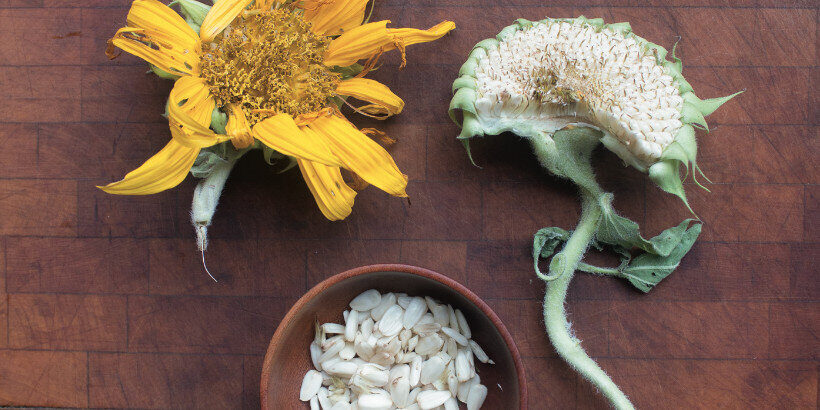
“The process of cooking sunflowers is slightly different from that for cooking artichokes, with the result being a unique vegetable with the texture of an artichoke and a strong sunflower flavor.”— Alan Bergo
Did you know that more than just the seeds of a sunflower are edible? Almost every part of this tall, beautiful plant is completely safe (and delicious) to eat when cooked and combined with the right ingredients.
The following is an excerpt from The Forager Chef’s Book of Flora by Alan Bergo. It has been adapted for the web.
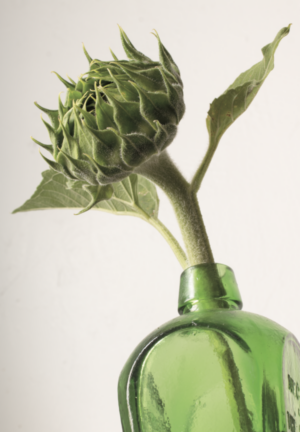 The Sensational Sunflower
The Sensational Sunflower
Sunflowers are more than a seed crop. Drive down country roads in the summer where I live, and you’ll see giant sunflowers towering over gardens, telling you summer is at its peak. If you look at the plants while they’re growing, at the stage before the flowers bloom you might notice that they resemble an artichoke, and you’d be right.
Sunflower vs. Artichoke
An artichoke, is, after all, just an unopened flower caught at the right stage. The process of cooking sunflowers is slightly different from that for cooking artichokes, with the result being a unique vegetable with the texture of an artichoke and a strong sunflower flavor.
There are a few chefs who know this trick. I learned it by watching Daniel Humm of Eleven Madison Park, but I was also reminded of it by my friend Sean Sherman, who says there was a long history of Indigenous use of sunflower heads. He describes a method for cooking them in his book, The Sioux Chef’s Indigenous Kitchen.
Edible Parts of A Sunflower
In addition to their unripe flowers, sunflowers have other edible parts most chefs I know rarely think to use. The leaves, although a bit too intensely flavored to serve as cooked greens, are great blanched and used for things like Roulades Verts or wrapping a delicate fish such as a walleye before it hits the grill.
At the same time you cut the unripe flower, the top 6 to 12 inches (15–30 cm) of the stem can be tender and delicious, peeled and cooked into what I would call sunflower marrow, in a nod to Chef Dan Barber who does the same with kale, broccoli, and cauliflower stems.
Sunflower Growth Season
If you miss the period of growth for sunflower artichokes, the seeds that form afterward, still white and immature, are tender, mild, and delicious in soups, in risotti, as a sprinkle, or tossed into pilafs. Finally, the tubers or sunchokes / Jerusalem artichokes, although from a cousin plant, are delicious and have a beautiful, otherworldly shape. Harvesting them is like digging for buried treasure in the fall.
RECIPE: Sunflower Artichokes
Serves 2 as an appetizer
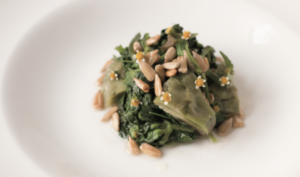 This recipe is easily scaled, depending on how many heads you have. When choosing sunflowers to harvest, look for the largest ones you can find. Small sunflower chokes might look appealing, but there isn’t much food left after trimming. I think the most interesting thing to consider, though, is what other unopened flowers are still out there for us to discover—and eat?
This recipe is easily scaled, depending on how many heads you have. When choosing sunflowers to harvest, look for the largest ones you can find. Small sunflower chokes might look appealing, but there isn’t much food left after trimming. I think the most interesting thing to consider, though, is what other unopened flowers are still out there for us to discover—and eat?
Ingredients
- 1 large green sunflower
- 5 cups (1.25 L) unsalted water or vegetable stock, divided
- Kosher salt, to taste
- Olive or Smude’s sunflower oil, for serving (optional)
Procedure
Bring 4 cups (945 ml) of the water to a simmer in a tall saucepot, then cook the sunflower head for 3 to 4 minutes. Remove the sunflower from the pot, then transfer it to a sauté pan with the remaining water and a good pinch of salt. Cover the pan, then simmer, turning occasionally, until the sunflower bud is tender when pierced with a knife, about 3 to 4 minutes, depending on size.
Make sure the buds are tender, as you won’t be able to clean them properly otherwise. Allow the sunflower to cool, then transfer it to a cutting board and trim with a paring knife, first removing the outer leaves, then scraping out any flower petals from the inner portion of the bud, just as you would with an artichoke.
Do not remove the base of the stem. It’s delicious—almost the best part of the plant, just like an artichoke. If you won’t be using the buds immediately, transfer them to a lidded container and refrigerate until needed. I like to serve them cut into pieces, warmed, drizzled with Smude’s oil and lemon, and crowned with a sprinkle of sunflower seeds.
Recommended Reads
Recent Articles
Chances are, you’ve seen cattails growing on the edge of your local lake or stream at least once or twice. Instead of just passing these plants, try foraging for and cooking them to create delicious seasonal dishes! The following excerpt is from The New Wildcrafted Cuisine by Pascal Baudar. It has been adapted for the…
Read MoreGarlic mustard: while known as “invasive,” this plant can be consumed in its entirety and has great nutritional value. Plus, the garlic-flavor is a perfect addition to any recipe that calls for mustard! The following are excerpts from Beyond the War on Invasive Species by Tao Orion and The Wild Wisdom of Weeds by Katrina…
Read MoreOh, honeysuckle…how we love thee. If only there was a way to capture the sweet essence of this plant so we could enjoy it more than just in passing. Luckily, foraging and some preparation can help make that happen! Here’s a springtime recipe that tastes exactly like honeysuckle smells. The following excerpt is from Forage,…
Read MoreIntroducing…your new favorite brunch dish! This whole broccoli frittata is packed with fresh, wildcrafted flavors that are bound to help you start your day off on the right foot. The following is an excerpt from The Forager Chef’s Book of Flora by Alan Bergo. It has been adapted for the web. RECIPE: Whole Broccoli Frittata…
Read MoreWondering where to forage for greens this spring? Look no further than hedges, which serve as natural havens for wild greens and herbs! The following is an excerpt from Hedgelands by Christopher Hart. It has been adapted for the web. Food from Hedges: Salads and Greens Let’s start by looking at all the wild foods…
Read More

